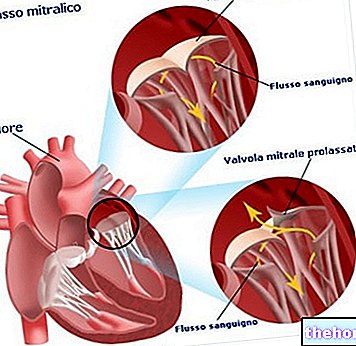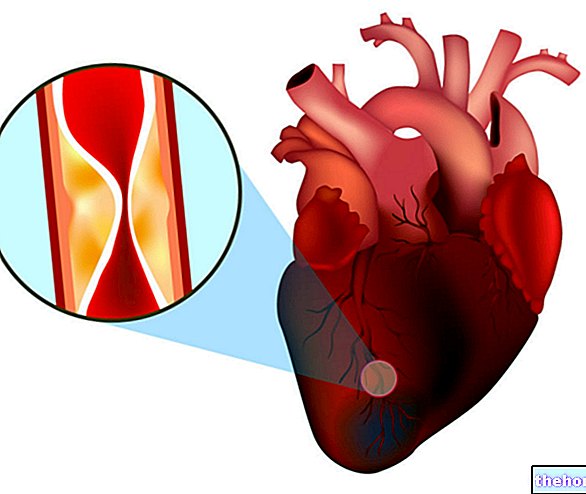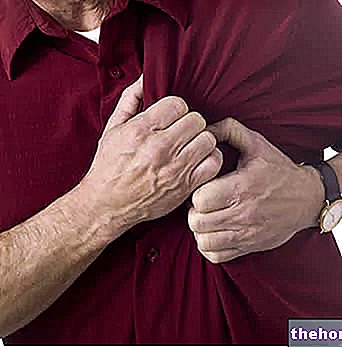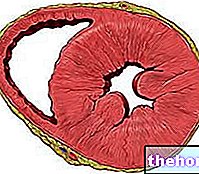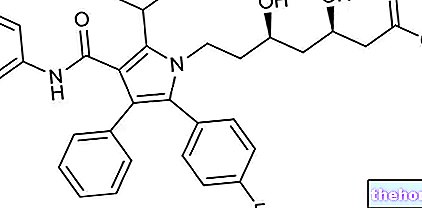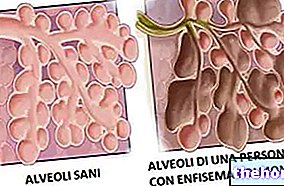To learn more about Anatomy and Functions: Heart Valves (incomplete and reduced opening of the heart valve; blood is forced to pass through a smaller orifice than normal);
Any heart valve can be prone to these functional defects, but there are some peculiarities:
- Diseases affecting the mitral and aortic valves are much more frequent (therefore the valves of the "left heart" are more prone to disease);
- Valvulopathies of the right section of the heart (tricuspid and pulmonary) are rare (the pressure regimen is lower) and, generally, consequent to problems of congenital origin.
The causes of heart valve disease can also be classified as follows:
- Congenital causes: present from birth, due to changes in the embryonic development of heart structures;
- Acquired causes: they appear in the course of life and can be consequent to:
- degeneration of the valve tissue (a more frequent cause in elderly people, often hypertensive, substantially due to the state of wear of the valve structures)
- calcium deposits (calcification) in the parts of the valve
- inflammation (endocarditis)
- infections
- ischemia in acute myocardial infarction
- trauma (very rarely)
- secondary to diseases of the heart muscle and / or large vessels
- Aortic stenosis
- Aortic insufficiency
- Alteration in the number of cusps
Nowadays, the understanding and clinical experience in valvulopathies have changed, in relation to several factors:
- The identification of rheumatic valve disease;
- The reduction of the incidence of acute rheumatic fever;
- The reduction of infections;
- The improvement of living conditions and the increase in the duration of life;
- The development of new analytical technologies that allow a better definition of the morphology of the valves (transesophageal echocardiogram, magnetic resonance).
Although over the last 50 years there has been a great reduction in rheumatic valve disease in Western countries, mediated by the spread of antibiotic prophylaxis, there has not been an equal reduction in valve surgery. This is a consequence of the fact that the type of patients of surgical relevance has changed with the passage of time.
Currently, the most frequent causes of valvulopathy that are encountered are the following:
- Degenerative cause, consequent to the progressive damage of the valve structure that occurs with aging;
- Valvular dysfunctions secondary to heart disease, often of ischemic origin (related to atherosclerosis);
- Endocarditis, related to intravenous drug use.
Symptoms that can develop are:
- Breathing difficulty (mainly from exertion at first, but can occur at rest or during the night if it is more severe)
- Easy fatigue, dizziness or fainting episodes (syncope)
- Heart rhythm abnormalities which can cause palpitations and other problems (arrhythmias);
- Swelling of tissues due to fluid congestion (edema);
- Chest pain or angina. This can occur if there is not enough blood flow to the coronary arteries (the arteries that carry blood to the heart muscle);
- Stroke (caused by the entry into the circulation of clots that form in the dilated chambers of the heart);
- Hepatic congestion (if right ventricle involved).
Several other secondary complications can develop, depending on the valve affected and the severity of the problem.

